Generator Guide for Power Outages
10th Jan 2020
A generator can supply power at your property in the event of a power outage, so you can keep things like fridges and freezers, phones, or water-pumping appliances running until the main power supply is restored.
There are many types of generators, including inverter, single phase, three phase, diesel or petrol options, with power outputs ranging from 1000 watts to 15000 watts. The smaller portable models are ideal for running smaller appliances, and the bigger sizes are installed as permanent, to provide automatic backup power.
Because of the risk of electric shock or electrocution, you must take appropriate safety steps when installing, operating and maintaining your generator. If you want to connect a generator as backup power for your home or business, you must use a licensed electrician.
The type and size of generator you need will depend on the number and type of electrical appliances you’ll be running at any one time. As well as catering for the running power of the appliances, the generator will also need enough output to cover the initial surge of power appliances draw when they first switch on (such as electric motors on water pumps etc)
Some electronic equipment, such as TVs, computers and phones, are very sensitive to fluctuations in power supply. If you are powering these devices with a generator, you need a ‘inverter generator’ that provides ‘clean’ power without power surges, spikes or line noise, to avoid damaging the equipment.
Our most popular models for power outages can be viewed here :- Recommended Power Outage Generators
There are significant safety risks associated with installing generators, including electric shock to the person attempting to do the work or potential death for anyone working on the electricity supply in the area.
Severe penalties apply if your system does not comply with the appropriate electrical safety standards (AS/NZS 3000). Your electrician must give you a certificate of compliance to verify the work has been performed correctly and is safe for you to use.
When installing a generator, the licensed electrician must install a changeover switch to ensure the generator and the normal electricity supply can’t operate at the same time.
Before using your generator, make sure you read the user manual and fully understand the operating procedures.
Generator Operating tips
- Never modify an extension cord to make a temporary connection to a generator.
- Protect the generator from moisture and ensure its cables are suitable for the environment it is in.
- Always fully unwind the power cable when operating the generator, as coiled cables can get very hot.
- If the generator stalls when you try to start it, turn off the appliances, start the generator, then turn the appliances on one at a time.
- Generators can get very hot – never operate one near combustible material, as it is a fire risk.
- Liquid fuel (diesel or petrol) and its vapour are highly flammable. Store extra fuel for your generator in a separate location and ensure the generator is sufficiently cool before refuelling it.





